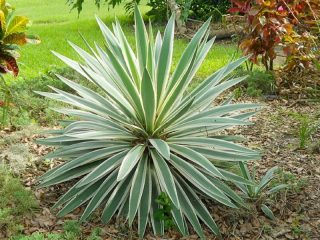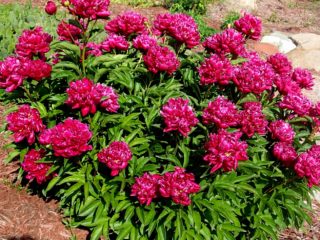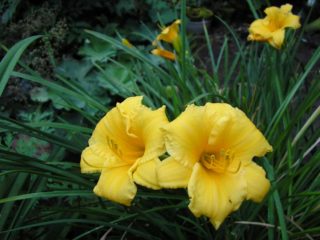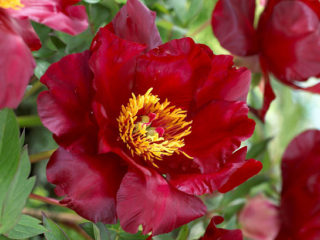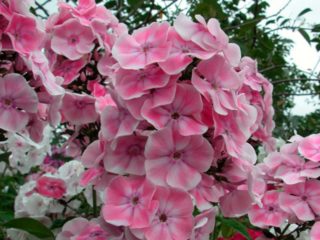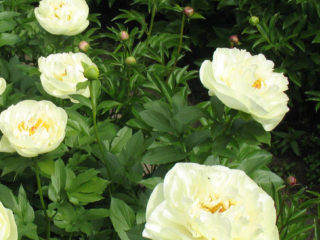Content
Hyacinth is a plant suitable for cultivation both at home and in open ground. But in any case, its bulbs require periodic digging from a pot or flower bed and replanting. The procedure helps the plant “gain strength”, so it should not be neglected, otherwise it blooms sparingly or does not form buds at all. However, for it to be beneficial, it is necessary to replant hyacinths on time and in compliance with certain rules.
Is it necessary and when to replant hyacinth?
In order for the buds to form and open, the roots of hyacinths actively “pull” nutrients from the soil. Accordingly, if replanting is neglected, the bulbs gradually lose the ability to provide the plant with the macro- and microelements it needs. Its development slows down, the flowers become smaller, the petals fade, and the inflorescence becomes deformed. Or the hyacinth may “refuse” to produce a peduncle altogether.
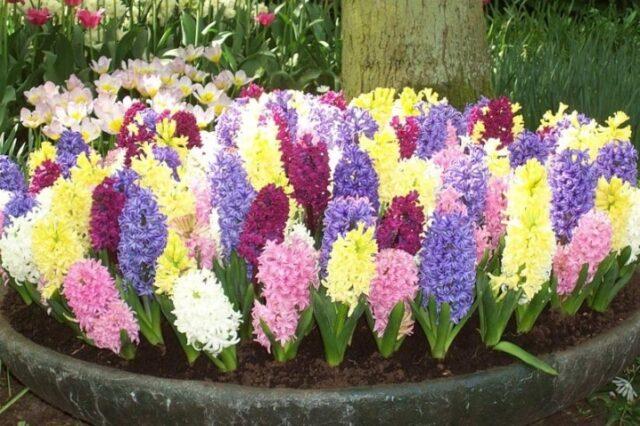
Bright and abundant flowering greatly “depletes” hyacinths
And, on the contrary: regular and timely replanting helps the plant to properly spend the dormant period and “stock up on strength”, without which the formation of a normal flower bud is impossible. Also, in order to “release” the peduncle, hyacinth requires heat. And if you leave the bulbs in the open ground without digging and replanting, they may simply rot if the summer is rainy and cool.
In addition, replanting is an effective prevention of the development of diseases to which most varieties and hybrids of hyacinth are susceptible. In open ground, pests are also added to them.
Transplantation is carried out taking into account the natural development cycle of the plant and the change of seasons. It is not recommended to disturb them unless absolutely necessary during flowering and dormant periods. Next, approximately 1.5-2 months should pass between the end of budding and digging up the hyacinths. Focus on the condition of the peduncle, allowing it to dry completely. Transplantation begins only at the end of September or at the beginning of October. This is the time that is considered the most favorable for the procedure.

Deformed, shrinking inflorescences are a typical consequence of neglecting replanting
It is especially important to observe the timing of transplantation when growing hyacinths in open ground. If you hurry with this, they will begin to form leaves and peduncles, their “rudiments” will inevitably freeze in the winter, and the bulb will die. When transplantation is done late, the hyacinth does not have time to “recover from stress” and form sufficiently developed roots before the cold weather. In this state, it is also unlikely to survive the frost.
How to replant hyacinth at home
Specimens grown at home require replanting, as the pot periodically becomes cramped for them. The procedure involves replacing the soil and container. At the same time, pathogens, eggs and insect larvae are destroyed.
Transplanting hyacinth into a pot after purchase
In stores, hyacinth bulbs are most often sold in very small pots and “transport” soil. The soil, which contains practically no nutrients, and the general “crowding” of the plant do not suit them, so they need to be replanted.
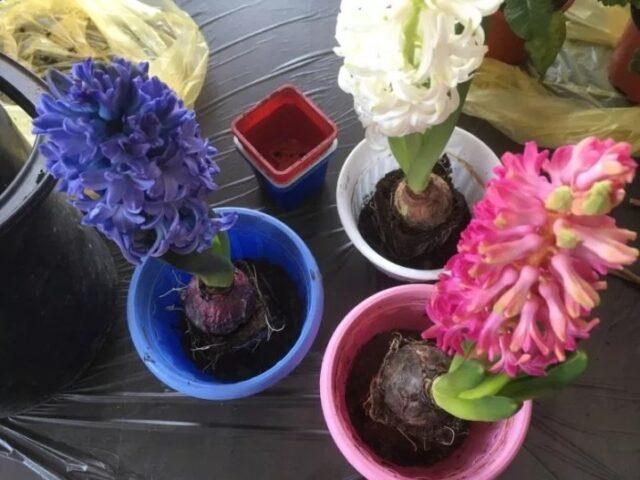
If you don’t replant a store-bought hyacinth, you can throw it away after flowering - it definitely won’t survive in such conditions.
But it would be correct to replant the hyacinth not immediately after purchase, but after 1.5-2 weeks, allowing it to adapt to the changed living conditions. An optimal microclimate and proper care will facilitate the recovery process:
- constant temperature within 20-24 °C;
- daylight hours lasting 12-15 hours;
- watering every 3-4 days with settled water at room temperature;
- refusal to apply fertilizers.
The size of a new pot for replanting hyacinth after purchase should be 3-4 cm larger than the diameter of the bulb. You should not take a container that is too large and deep, otherwise the roots will begin to “develop” the space allotted to them, and the plant will not have enough strength to form flower stalks.
To replant store-bought hyacinth, a purchased bulb substrate is ideal. But you can also use a homemade soil mixture of high turf, peat and coarse sand. Both the substrate and the container must be disinfected.
1.5-2 hours before transplanting, water the flower well. The bulb is removed from the soil and carefully examined for mechanical damage or traces of damage by pathogenic microflora. “Suspicious” areas are cut out with a sharp knife or scalpel, the “wounds” are disinfected by sprinkling with crushed chalk and activated carbon. Peeling surface flakes are removed. Then, to disinfect and “maintain vitality,” it is successively soaked in a solution of any fungicide and biostimulant for 30-40 minutes.
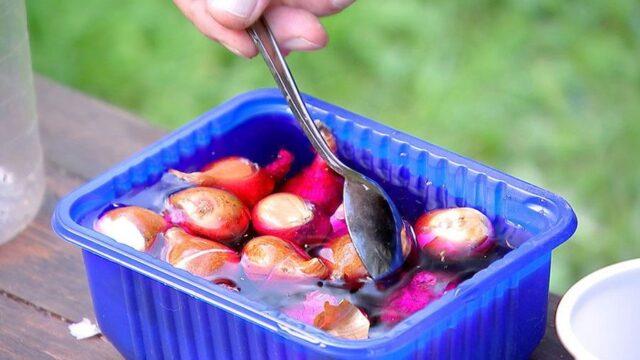
Potassium permanganate solution is an affordable and effective “homemade” antiseptic
Any drainage material (a layer 2-3 cm thick) must be placed at the bottom of a pot intended for transplanting store-bought hyacinth. Then it is filled 2/3 with substrate and watered moderately. After letting the water soak in, plant the bulb, deepening it about halfway. Having filled the soil almost to the edges of the pot, it is carefully compacted by hand, and the hyacinth is watered a little again.
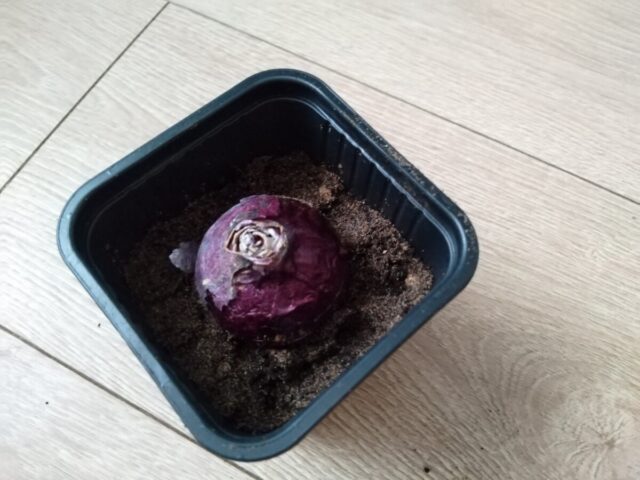
The most important thing when transplanting is not to cover the root collar with soil, leaving it on the surface
After replanting the pot with a hyacinth bulb from the store, it is necessary to provide it with coolness and protection from direct sunlight. Until the leaves appear, watering is carried out only through the pan, and refrain from fertilizing.
How to replant hyacinths after purchase in open ground
The flowerbed for transplanting hyacinths into open ground is prepared in advance. They are given an area well lit by the sun, protected from wind and drafts. The quality of the soil is also important - it must be loose, so that water does not stagnate at the roots, there is normal air exchange, but at the same time it must be sufficiently nutritious. Hyacinths require an acid-base balance that is neutral or close to it.
2-3 weeks before transplanting the bulbs, the selected area is dug well, while getting rid of plant and other debris. During the process, humus is added (2-3 l/m²), complex fertilizer for bulbous plants (about 10 g/m²), and other soil deficiencies are corrected. You can “correct” its acid-base balance, excessive “heaviness” or “lightness”.
Preparation of hyacinth bulbs for transplantation into open ground follows the algorithm described above. Here, treatment with drugs to prevent disease and improve overall endurance is even more important.
To transplant hyacinth outside, choose a dry, cool, sunny day. The bulbs are transferred into holes located at intervals of 10-12 cm. It is advisable to throw a little coarse sand or other drainage material to the bottom. Before and after the procedure, the substrate is moderately moistened.
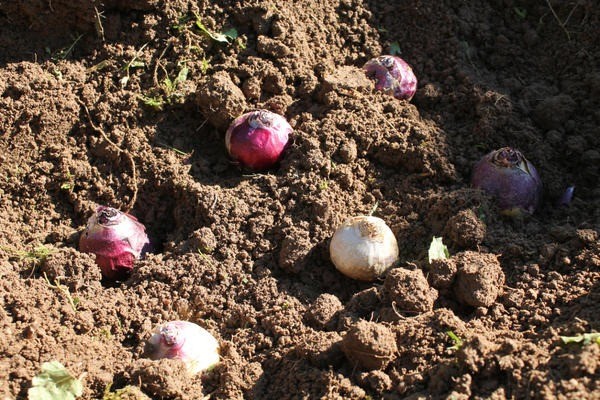
Immediately after transplanting is completed, it is recommended to mulch the flowerbed.
Is it possible to replant a blooming hyacinth?
For any plant, replanting during flowering is a huge “stress”.Hyacinth is no exception. If the plant survives at all, it will recover for 1-2 seasons; you can’t expect it to form a peduncle during this time.
Accordingly, replanting hyacinths to a new location during flowering is strongly not recommended. It is carried out only in case of emergency. Experienced gardeners and flower growers cite only the very unsatisfactory condition of the purchased plant or a “massive” attack of pests or the development of a disease among the reasons justifying transplanting flowering hyacinth. In both cases, it will not be possible to carry out the procedure using the transshipment method to minimize damage to the roots.

After replanting, the plant will inevitably shed its existing flowers and buds, and the leaves will turn yellow.
How to replant hyacinth in spring
The vast majority of gardeners and flower growers practice autumn replanting of hyacinths. But if the goal is to get them to bloom at an “inopportune” time, by a certain date, you can postpone the procedure to spring.
The flowerbed for transplanting hyacinths into open ground has been dug up and fertilized in advance, since the fall of last season. For the winter, it is covered with any waterproof material, preventing the “washing out” of fertilizers.
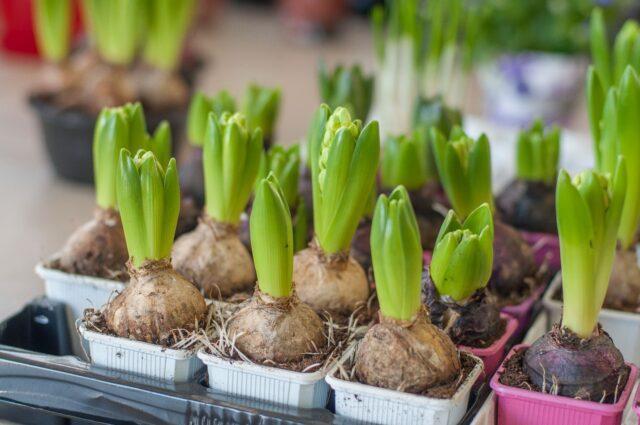
For replanting in the spring, bulbs of the most hardy, easy-to-care varieties and hybrids are selected
The preparation of the bulbs, in addition to dressing in a solution of a fungicide and biostimulator, includes one more stage - freezing them. Immediately before the procedure, completely dried planting material is sent to the freezer for an hour. Only in this case can you count on hyacinths blooming this season. The planting itself follows the same algorithm as in the fall.
Transplanting hyacinths in the spring when growing them at home is also possible. The procedure is no different from the “autumn” one. The only caveat is that the bulbs here also require “freezing”.
Further care
Caring for hyacinth after transplantation at home includes creating an optimal microclimate. The plant, in addition to relatively low temperatures, long daylight hours and good ventilation in the room, requires protection from cold drafts and flows of warm dry air coming from radiators and other heating devices.
Agrotechnical measures required for hyacinth after transplantation:
- Watering. It should be regular, but moderate. The flower has a very negative attitude towards both constant waterlogging of the soil and prolonged “drought”. Water should only be used that has been settled or otherwise softened and heated to room temperature. Any method that prevents drops from getting on the bulbs is suitable. Most often, gardeners practice bottom watering through a tray. Spraying the above-ground part of the plant is not practiced.
- Feeding. Hyacinth after transplantation begins to be fertilized when the bulb “produces” leaves and peduncle. The compositions are applied every 12-15 days.It is advisable to use store-bought products designed specifically for bulbous plants, alternating them with organomineral fertilizers based on humates.
- Prevention of diseases and pest attacks. About once a month, water for irrigation is replaced with a solution of any fungicide or universal insecticide, reducing the dosage by half compared to that specified in the instructions.

Fertilizer application is stopped during the hyacinth flowering period, immediately after it is resumed, fertilizing is carried out 1-2 more times
After flowering, hyacinth gradually begins to prepare for a period of rest. You cannot immediately cut off the leaves and peduncle - they must turn completely yellow and dry out, “giving up” all the nutrients to the bulb. You can only remove the seed capsule so that the plant does not waste energy on ripening the seeds.
Conclusion
Regardless of the place of cultivation, hyacinths need to be replanted periodically. This is one of the most important procedures in caring for it. If you neglect it, you can’t count on bright and long-lasting flowering. But in order for the transplant to benefit the bulbs for future use, it is necessary to choose the right time and follow the algorithm of actions. In general, the procedure is simple; even a less experienced gardener or florist can handle it.
